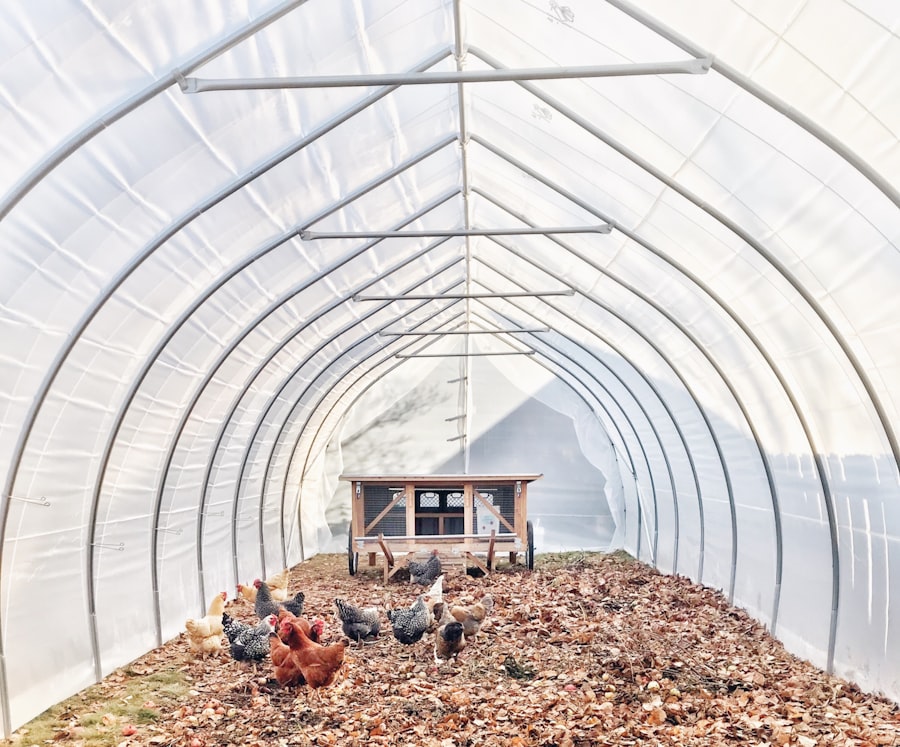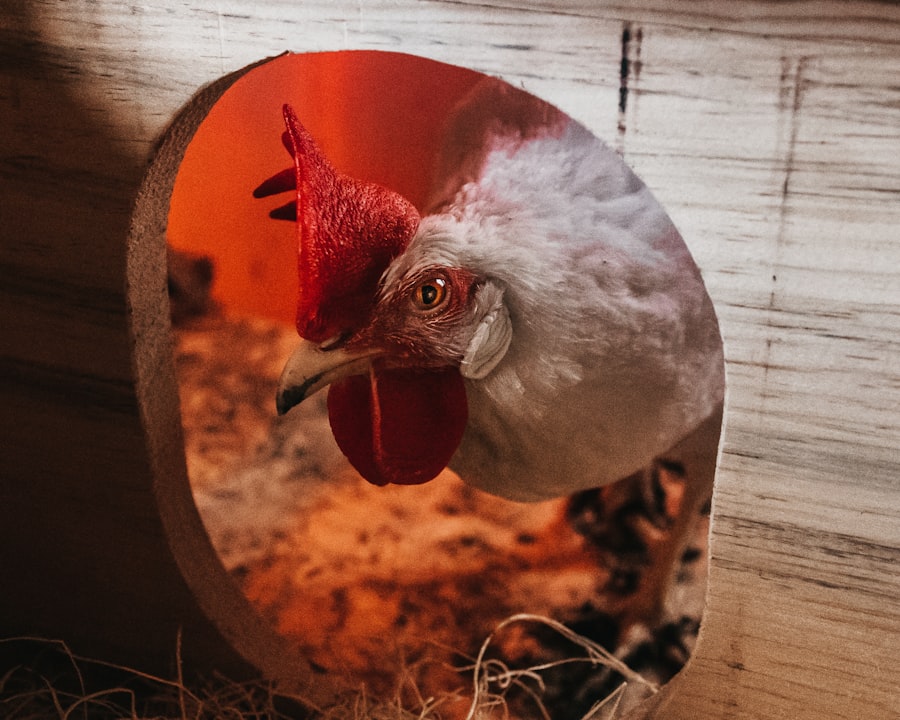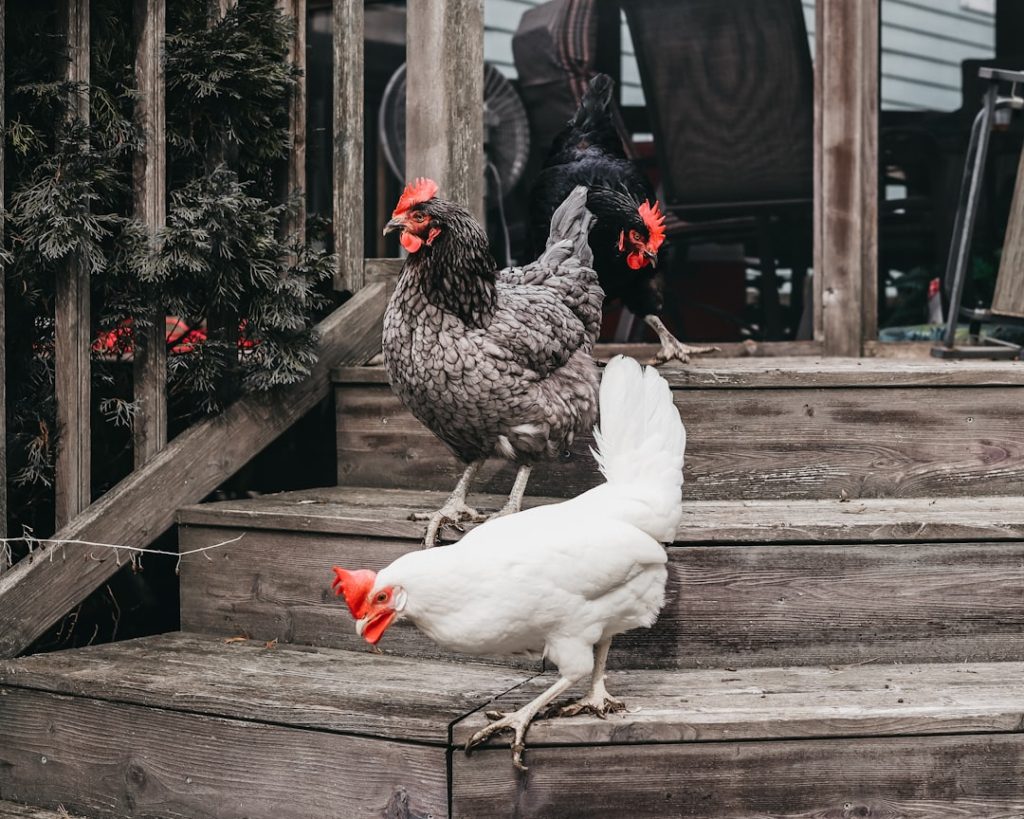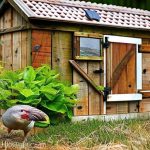When selecting an enclosure for chickens, several key factors must be considered. Predator-proofing is essential, requiring sturdy materials like hardware cloth or welded wire to prevent access by ground predators. A secure roof is also necessary to protect against aerial predators such as hawks and owls.
Size is another crucial aspect. Chickens require ample space for movement and natural behaviors. A general guideline is to provide at least 4 square feet per chicken in the coop and 10 square feet per chicken in the outdoor run.
This ensures sufficient room for activities like scratching and dust bathing. The location of the enclosure is equally important. It should be situated in a well-drained area with adequate shade.
The enclosure should also be positioned away from potential contamination sources, such as standing water or areas frequented by wild birds. By carefully considering these factors – predator protection, appropriate size, and suitable location – chicken owners can create a safe and comfortable environment that promotes the health and well-being of their flock.
Table of Contents
- 1 Securing Fencing and Gates
- 2 Providing Adequate Space
- 3 Using Chicken-Proofing Techniques
- 4 Implementing a Roaming Schedule
- 5 Regularly Inspecting and Maintaining the Enclosure
- 6 Training and Monitoring the Chickens
- 7 FAQs
- 7.1 What are some ways to keep chickens contained?
- 7.2 What type of fencing is best for containing chickens?
- 7.3 How high should a chicken fence be?
- 7.4 What is electric fencing and how does it work for containing chickens?
- 7.5 What are some features to look for in a chicken coop for containment?
- 7.6 Are there any natural deterrents for keeping chickens contained?
Key Takeaways
- Choose an enclosure that is appropriate for the number of chickens you have and provides protection from predators and the elements.
- Secure fencing and gates to prevent predators from entering and to keep chickens from escaping.
- Provide adequate space for chickens to roam, scratch, and dust bathe, with at least 4 square feet per bird in the coop and 10 square feet per bird in the run.
- Use chicken-proofing techniques such as burying wire mesh to prevent digging predators and covering the top of the enclosure to prevent aerial attacks.
- Implement a roaming schedule to allow chickens to free-range in a safe area under supervision to forage and exercise.
- Regularly inspect and maintain the enclosure to ensure it remains secure and in good condition.
- Train and monitor the chickens to ensure they are healthy, safe, and well-behaved within the enclosure.
Securing Fencing and Gates
Choosing the Right Fencing Materials
When it comes to fencing, it’s vital to use strong and durable materials that can withstand predator attempts to gain access. Hardware cloth or welded wire are excellent options, as they are difficult for predators to breach.
Burying the Fencing and Securing the Gates
To prevent predators from digging underneath the fencing, it’s essential to bury it at least 12 inches into the ground. Additionally, gates should be sturdy and secure, with latches that are difficult for predators to manipulate.
Adding an Extra Layer of Protection
To further deter predators, consider installing a predator-proof apron around the perimeter of the enclosure. This will provide an additional barrier to prevent predators from gaining access to your chickens. By following these steps, you can ensure your chicken enclosure is secure and your chickens are safe from harm.
Providing Adequate Space

Providing adequate space for your chickens is essential for their health and well-being. Chickens need plenty of room to move around and engage in natural behaviors such as scratching and dust bathing. In the coop, it’s important to allow at least 4 square feet of space per chicken, while in the outdoor run, each chicken should have at least 10 square feet of space.
In addition to providing enough space for your chickens to move around, it’s also important to provide them with plenty of roosting space. Chickens like to roost at night, so it’s important to provide enough roosting bars for all of your chickens to comfortably perch. Additionally, providing ample nesting boxes will ensure that your hens have a comfortable and private space to lay their eggs.
By providing adequate space for your chickens, you can ensure that they have plenty of room to move around and engage in natural behaviors, leading to happier and healthier birds. Providing adequate space for your chickens is essential for their health and well-being. Chickens need plenty of room to move around and engage in natural behaviors such as scratching and dust bathing.
In the coop, it’s important to allow at least 4 square feet of space per chicken, while in the outdoor run, each chicken should have at least 10 square feet of space. In addition to providing enough space for your chickens to move around, it’s also important to provide them with plenty of roosting space. Chickens like to roost at night, so it’s important to provide enough roosting bars for all of your chickens to comfortably perch.
Additionally, providing ample nesting boxes will ensure that your hens have a comfortable and private space to lay their eggs. By providing adequate space for your chickens, you can ensure that they have plenty of room to move around and engage in natural behaviors, leading to happier and healthier birds.
Using Chicken-Proofing Techniques
Using chicken-proofing techniques is essential for keeping your chickens safe and secure. One effective technique is using predator-proof hardware cloth or welded wire for the fencing and covering any openings with these materials. This will prevent predators from gaining access to your chickens while still allowing for adequate ventilation.
Another important chicken-proofing technique is securing any potential entry points into the coop, such as windows or vents. Using predator-proof materials such as hardware cloth or welded wire will help prevent predators from gaining access through these openings. Additionally, it’s important to regularly inspect the enclosure for any potential weak spots or areas where predators could gain access.
By using chicken-proofing techniques such as these, you can help ensure that your chickens are safe and secure from potential threats. Using chicken-proofing techniques is essential for keeping your chickens safe and secure. One effective technique is using predator-proof hardware cloth or welded wire for the fencing and covering any openings with these materials.
This will prevent predators from gaining access to your chickens while still allowing for adequate ventilation. Another important chicken-proofing technique is securing any potential entry points into the coop, such as windows or vents. Using predator-proof materials such as hardware cloth or welded wire will help prevent predators from gaining access through these openings.
Additionally, it’s important to regularly inspect the enclosure for any potential weak spots or areas where predators could gain access. By using chicken-proofing techniques such as these, you can help ensure that your chickens are safe and secure from potential threats.
Implementing a Roaming Schedule
Implementing a roaming schedule for your chickens can help provide them with exercise and mental stimulation while also keeping them safe from potential predators. Allowing your chickens to roam freely in a fenced-in area during certain times of day can give them the opportunity to engage in natural behaviors such as scratching and foraging for insects. It’s important to implement a roaming schedule that takes into account potential predator activity, such as dawn and dusk when many predators are most active.
By allowing your chickens to roam during times when predator activity is low, you can help keep them safe while still providing them with opportunities for exercise and mental stimulation. Additionally, implementing a roaming schedule can help prevent overgrazing in certain areas by rotating where your chickens are allowed to roam. This can help maintain a healthy environment for both your chickens and the surrounding vegetation.
Implementing a roaming schedule for your chickens can help provide them with exercise and mental stimulation while also keeping them safe from potential predators. Allowing your chickens to roam freely in a fenced-in area during certain times of day can give them the opportunity to engage in natural behaviors such as scratching and foraging for insects. It’s important to implement a roaming schedule that takes into account potential predator activity, such as dawn and dusk when many predators are most active.
By allowing your chickens to roam during times when predator activity is low, you can help keep them safe while still providing them with opportunities for exercise and mental stimulation. Additionally, implementing a roaming schedule can help prevent overgrazing in certain areas by rotating where your chickens are allowed to roam. This can help maintain a healthy environment for both your chickens and the surrounding vegetation.
Regularly Inspecting and Maintaining the Enclosure

Inspecting the Enclosure
Regularly checking the fencing for any signs of wear or damage is crucial in preventing predators from accessing your chickens. Additionally, inspecting the gates and latches for any weaknesses can help prevent predators from gaining access.
Maintaining the Enclosure
In addition to regular inspections, it’s important to maintain the enclosure by keeping vegetation trimmed back from the fencing and ensuring that there are no potential hiding spots for predators near the enclosure. Regularly cleaning out the coop and run can also help prevent potential health issues for your chickens.
Benefits of Regular Inspection and Maintenance
By regularly inspecting and maintaining the enclosure, you can help ensure that your chickens are safe and secure from potential threats while also providing them with a clean and healthy environment in which to thrive.
Training and Monitoring the Chickens
Training and monitoring your chickens is an important aspect of keeping them safe and healthy. By training your chickens to return to their coop at nightfall, you can help keep them safe from potential nocturnal predators such as raccoons or foxes. This can be done by providing treats inside the coop at nightfall so that they learn that this is where they should go at night.
Additionally, monitoring your chickens on a regular basis can help you identify any potential health issues or signs of distress early on. By observing their behavior and appearance, you can quickly address any concerns before they become more serious problems. By training and monitoring your chickens on a regular basis, you can help ensure that they are safe from potential threats while also providing them with a healthy environment in which they can thrive.
Training and monitoring your chickens is an important aspect of keeping them safe and healthy. By training your chickens to return to their coop at nightfall, you can help keep them safe from potential nocturnal predators such as raccoons or foxes. This can be done by providing treats inside the coop at nightfall so that they learn that this is where they should go at night.
Additionally, monitoring your chickens on a regular basis can help you identify any potential health issues or signs of distress early on. By observing their behavior and appearance, you can quickly address any concerns before they become more serious problems. By training and monitoring your chickens on a regular basis, you can help ensure that they are safe from potential threats while also providing them with a healthy environment in which they can thrive.
If you’re interested in learning more about keeping ducks contained, you should check out this article on what to feed ducks. It provides valuable information on how to properly care for ducks and keep them healthy and contained.
FAQs
What are some ways to keep chickens contained?
Some ways to keep chickens contained include using fencing, chicken wire, electric fencing, and chicken coops.
What type of fencing is best for containing chickens?
The best type of fencing for containing chickens is typically chicken wire or hardware cloth. These types of fencing are small enough to prevent chickens from squeezing through or getting caught.
How high should a chicken fence be?
A chicken fence should be at least 6 feet high to prevent chickens from flying over it. Some breeds of chickens are known for their ability to fly, so a taller fence may be necessary.
What is electric fencing and how does it work for containing chickens?
Electric fencing uses a low-voltage electric charge to deter animals from crossing the fence. It can be effective for containing chickens as long as the voltage is low enough to not harm the chickens.
What are some features to look for in a chicken coop for containment?
Some features to look for in a chicken coop for containment include secure latches on doors, predator-proof construction, and adequate ventilation. The coop should also be large enough to comfortably house the number of chickens you have.
Are there any natural deterrents for keeping chickens contained?
Some natural deterrents for keeping chickens contained include planting thorny bushes or using natural barriers like rocks or logs to prevent chickens from wandering. However, these methods may not be as effective as physical fencing.
Meet Walter, the feathered-friend fanatic of Florida! Nestled in the sunshine state, Walter struts through life with his feathered companions, clucking his way to happiness. With a coop that’s fancier than a five-star hotel, he’s the Don Juan of the chicken world. When he’s not teaching his hens to do the cha-cha, you’ll find him in a heated debate with his prized rooster, Sir Clucks-a-Lot. Walter’s poultry passion is no yolk; he’s the sunny-side-up guy you never knew you needed in your flock of friends!







